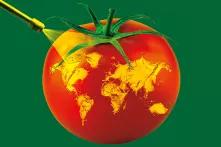
All over the world, projects are proving that an ecological future is possible: More and more cities, states, and regions are trying to slash pesticide use; or even ban chemical agents completely from their fields and land.

More than 550 German cities and municipalities have so far decided to manage their urban greenery partially or completely without pesticides. Some municipalities are phasing out a specific group of active ingredients or a specific active ingredient, such as glyphosate. Other municipalities have already completely cut the use of pesticides. One example is Saarbrücken, capital of the German state Saarland: The city has not used pesticides for 25 years. Many cities and regions in the European Union (EU) have also established pesticide-free zones – in Italy, Belgium, the Netherlands, and Luxembourg. However, so far this only affects municipal areas. Many farms in those regions continue to use pesticides. In 2007, Denmark implemented a nationwide ban on the use of pesticides in public areas. Additionally, Danish politicians have been working to reduce the usage of pesticides all over the country. Denmark has slashed nationwide pesticide use by more than 40 percent since 2011. It currently applies an average of 40 percent fewer pesticides than its EU neighbors. Despite these efforts, the country is still far from being completely pesticide-free.
One of the European pioneers in banning pesticides is Luxembourg, where a complete pesticide ban on public land came into force in 2016. Since 2021, the government has also forbidden the use of glyphosate on agricultural land – even though the herbicide is still approved throughout the EU until 2022. The Italian commune of Mals in South Tyrol – the largest apple growing region in Europe – is also particularly committed to living and doing business without harmful pesticides. In a referendum in 2014, the majority of residents decided that their community areas and agricultural land should be pesticide-free. Apart from broad support, the resolution faced a lot of opposition from business, such as large local apple orchards fighting in court to prevent the pesticide ban from being implemented. The administrative court finally overturned the referendum with the argument that the municipality was not the competent authority for this environmental protection issue.
Nevertheless, the civil society effort has received widespread recognition: In 2020, the community was honored with the EuroNatur award for its perseverance in taking action against pesticides.
Not only in Europe, but all over the world a change is taking place. In 2018, Mexico was admonished by the National Human Rights Commission for violating its due diligence obligations by failing to ban Highly Hazardous Pesticides (HHPs). Only two years later, the Mexican agriculture department has proposed rules for phasing out the use of glyphosate by 2024, following pressure from civil society organizations. Until then, a transition period will be established to achieve the total substitution of the herbicide. The competent authorities were urged to develop non-chemical alternatives to current pesticides. Kyrgyzstan even plans to completely phase out pesticide use. Kyrgyzstan’s parliament decided in 2018 that all agriculture should transition to organic production within the next ten years, eliminating the use of synthetic chemical insecticides, herbicides, fungicides, other agricultural chemicals as well as growth regulators. Only biological substances are excluded from the decision. In India, several states have begun to convert their agriculture to organic farming and ban pesticide use: The small state of Sikkim will be the first region in the world to have a 100 percent organic agriculture. This is a huge paradigm shift in a country that for decades had relied on the heavy use of synthetic fertilizers and pesticides.
Key to the decision in Sikkim were rising cancer rates, polluted rivers, and infertile soils due to pesticide usage. The Sikkim government also attributed its move to the fact that pesticide residues – including many that are banned in other countries – have contaminated staple foods such as rice, vegetables, and fish. The Indian state of Andhra Pradesh – about the size of Austria, Denmark and the Netherlands combined – announced in 2018 that the state’s approximately six million farmers will work without synthetic chemical pesticides by 2024 at the latest. Sri Lanka is following this lead: To achieve the goal of 100 percent organic agriculture, the government had temporarily banned the import of chemical fertilizers and pesticides in April 2021. A few months later after an economic crisis, the government reversed the decision and allowed imports again.
However, the country is sticking to the fight against toxic substances: For years now, the government has been tightening restrictions with the pesticide control law, banning a total of 36 Highly Hazardous Pesticides. For this effort, the country received the Special Future Policy Award in 2021, dedicated to the most effective policy solutions that protect people and the environment from hazardous chemicals.

